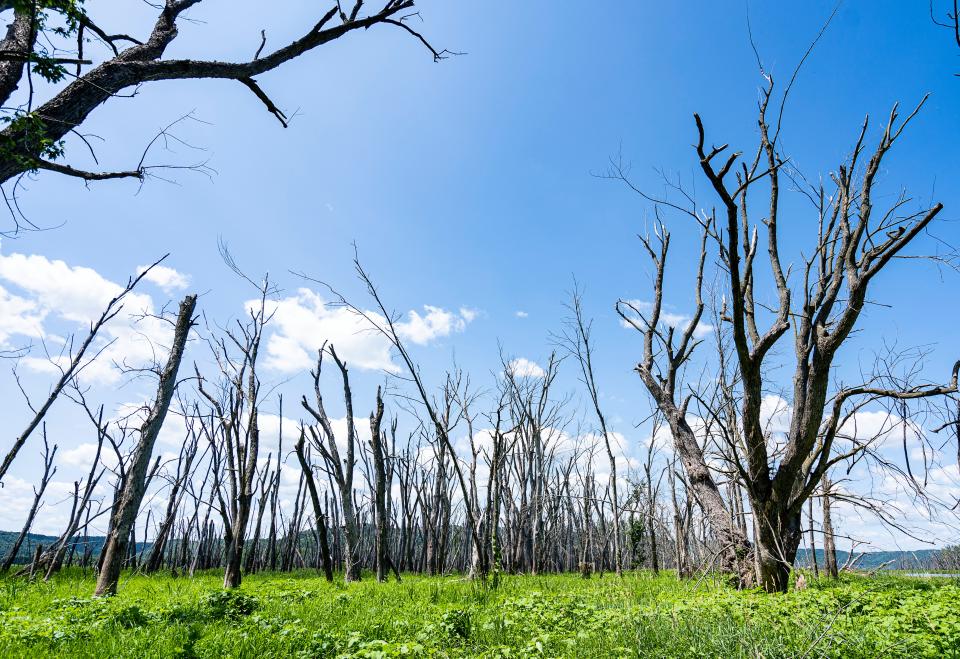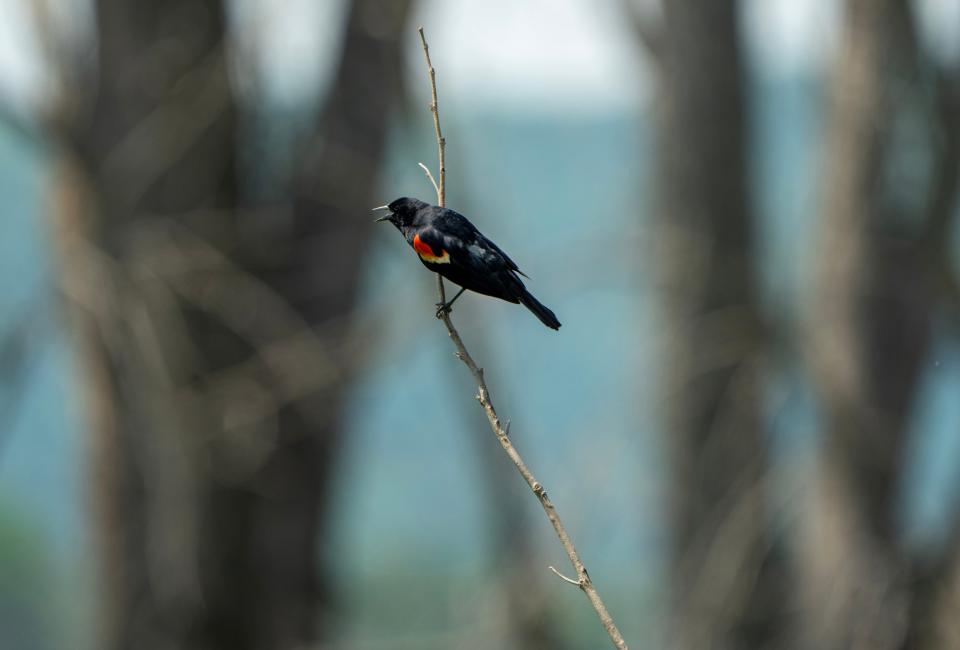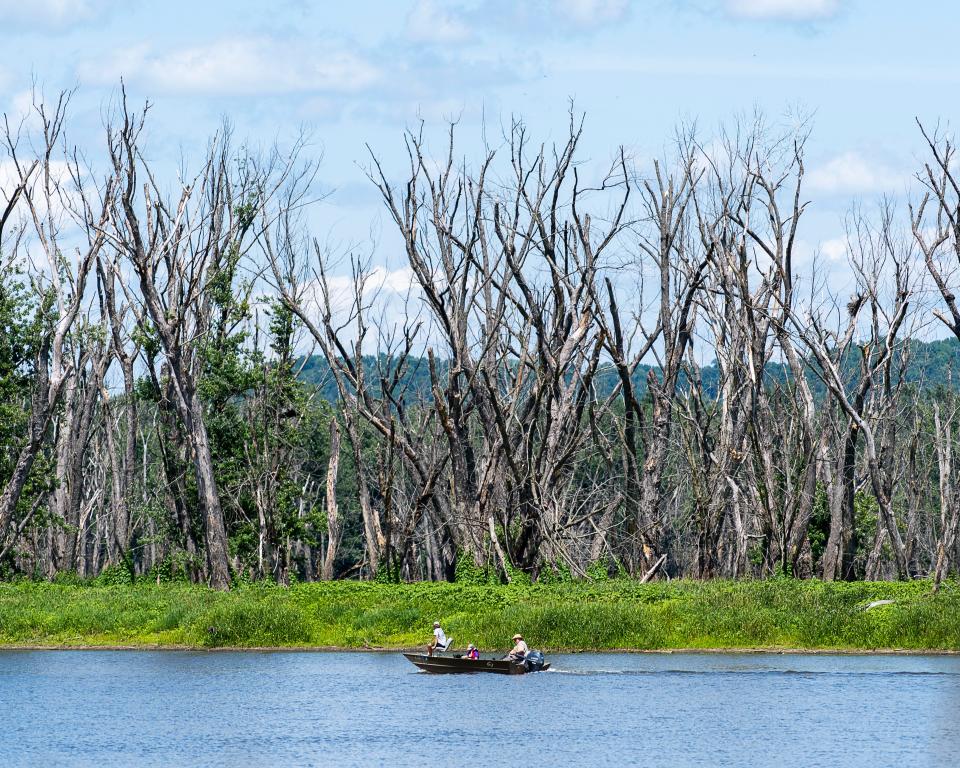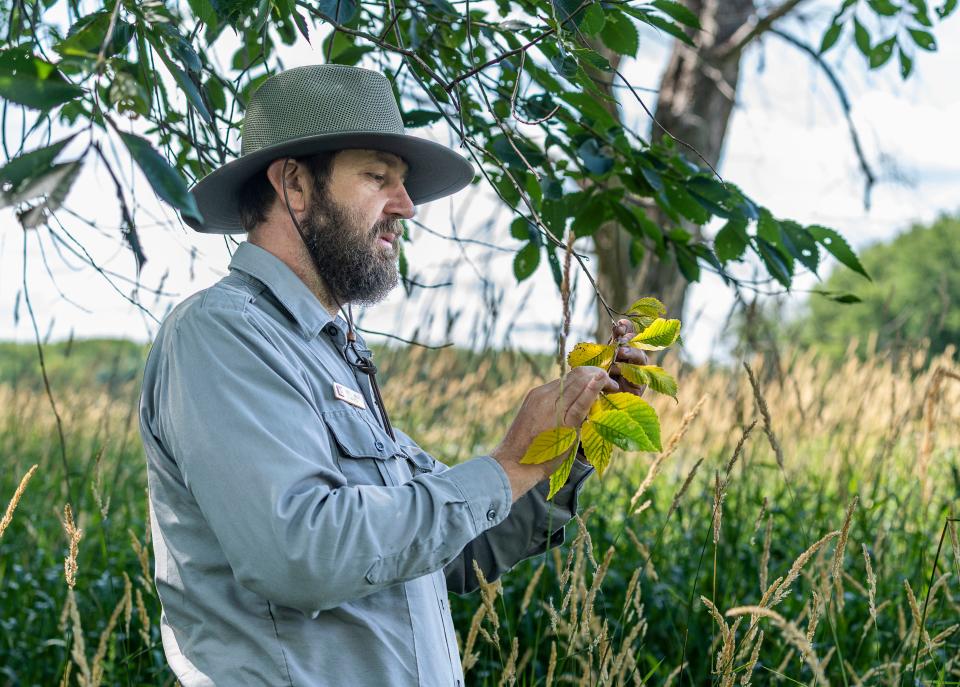What to know about floodplain forests, a struggling ecosystem on the Mississippi River
In the valley that the Mississippi River carves through the heart of America, one vital habitat is facing a multitude of threats.
The river's floodplain forests grow in rich, complex soils; provide safe resting grounds and food sources for hundreds of bird, insect, fish and other animal species; store carbon and retain pollutants that would otherwise end up downriver.
What's more, they're enjoyed by boaters, kayakers, hunters and even the casual observer walking or driving by.
But many of them are dying. Here's what to know.
What are floodplain forests?
A floodplain is the land around a river that can flood if the river jumps its banks. Forests that grow on the floodplain are called floodplain forests, sometimes also called bottomland forests.
The floodplain forests along the upper Mississippi River are mostly made up of silver maple, cottonwood, willow, green ash and American elm.
More: The Mississippi River's floodplain forests are dying. The race is on to bring them back.

Why are floodplain forests important?
The floodplain forests along the upper Mississippi River alone provide nesting and migratory habitat for as many as 180 bird species, according to a 2022 report on the ecological status and trends of the upper river. On the lower Mississippi River, some have pointed to the fragmentation of floodplain forests as a possible cause of endangerment or extinction of animal species.
Trees in the floodplain also capture pollutants that would otherwise run into the river – a critical role along the Mississippi, which suffers from excess nitrogen and phosphorus that collects in the Dead Zone in the Gulf of Mexico.

And healthy floodplain forests can also slow flooding. For example, a study in the Journal of the American Water Resources Association found that the ability of forests to slow water played a big role in reducing levee damage on the lower Missouri River, which feeds into the Mississippi River, during the Mississippi's historic 1993 flood.
More: A new technique could help save the Mississippi River's floodplain forests: raising the forest floor
How common are floodplain forests along the Mississippi River?
Floodplain forests are a key component of the Mississippi River ecosystem — they cover thousands of acres alongside the river in Wisconsin alone.
But they are shrinking. Between 1891 and 1989, the upper Mississippi and Illinois rivers lost nearly half of their floodplain forest cover due to urban and agricultural land use, as well as changes to the way the water flowed after locks and dams were installed in the 1930s.

In the Lower Mississippi Alluvial Valley – the historic floodplain of the lower river – a 2020 study estimated that about 30% of today’s land cover is forest. It used to be continuous across the valley.
Why are the forests struggling right now?
Trees in the floodplain are used to being inundated with water and generally withstand it. In the last few decades, though, they’ve been overwhelmed with high water from long-lasting floods, soaking the trees more than they can tolerate. Once the taller trees die, sun-loving grasses take over the understory in thick mats that make it nearly impossible for new trees to grow.
The ecological status and trends report found that forest cover along the river from the Twin Cities to Clinton, Iowa, had decreased by roughly 6% between 1989 and 2010. The next segment of floodplain, which ends before St. Louis, had lost about 4% of forest in that time.

In some spots, those losses accelerated in the following decade. Along the river between Bellevue and Clinton, Iowa, for example, forest cover dropped nearly 18% between 2010 and 2020, said Nathan De Jager, who researches the upper river’s floodplain forests for the U.S. Geological Survey.
Though it was a wet decade overall, a massive flood in 2019 caused the majority of damage to the trees, particularly in areas where the river forms the border between Wisconsin and northern Iowa. That flood was unusual not just for its intensity but for its duration – some trees were partly submerged for 100 days or more.
In areas where many trees die from water inundation, invasive grasses like reed canary grass are primed to take over and spread quickly. And other threats, like Dutch elm disease and the emerald ash borer, also plague the forests.
More: What to know about the aggressive grass taking over forests along the upper Mississippi River
More: Dutch elm disease came first. Then emerald ash borer. Now, an urgent push is on to restore trees.
Money is flowing in to save them, however, with a multitude of projects targeting their survival. That includes a newly adapted technique that would raise certain areas of the forest floor so new trees planted on top wouldn't be as low-lying.
Madeline Heim is a Report for America corps reporter who writes about environmental issues in the Mississippi River watershed and across Wisconsin. Contact her at 920-996-7266 or mheim@gannett.com.
This article originally appeared on Milwaukee Journal Sentinel: Mississippi River floodplain forests are dying, here's what to know

